Summary
- We have identified several campaigns of credentials phishing, likely operated by the same attackers, targeting hundreds of individuals spread across the Middle East and North Africa.
- In one campaign, the attackers were particularly going after accounts on popular self-described “secure email” services, such as Tutanota and ProtonMail.
- In another campaign, the attackers have been targeting hundreds of Google and Yahoo accounts, successfully bypassing common forms of two-factor authentication.
Introduction
From the arsenal of tools and tactics used for targeted surveillance, phishing remains one of the most common and insidious form of attack affecting civil society around the world. More and more Human Rights Defenders (HRDs) have become aware of these threats. Many have taken steps to increase their resilience to such tactics. These often include using more secure, privacy-respecting email providers, or enabling two-factor authentication on their online accounts.
What is phishing?Credentials phishing consists in the creation of a website that imitates the login prompt of a given online service, such as Gmail or Facebook, with the objective of luring a victim into visiting the malicious page and entering their username and passwords, thereby transmitting these credential to the attackers. |
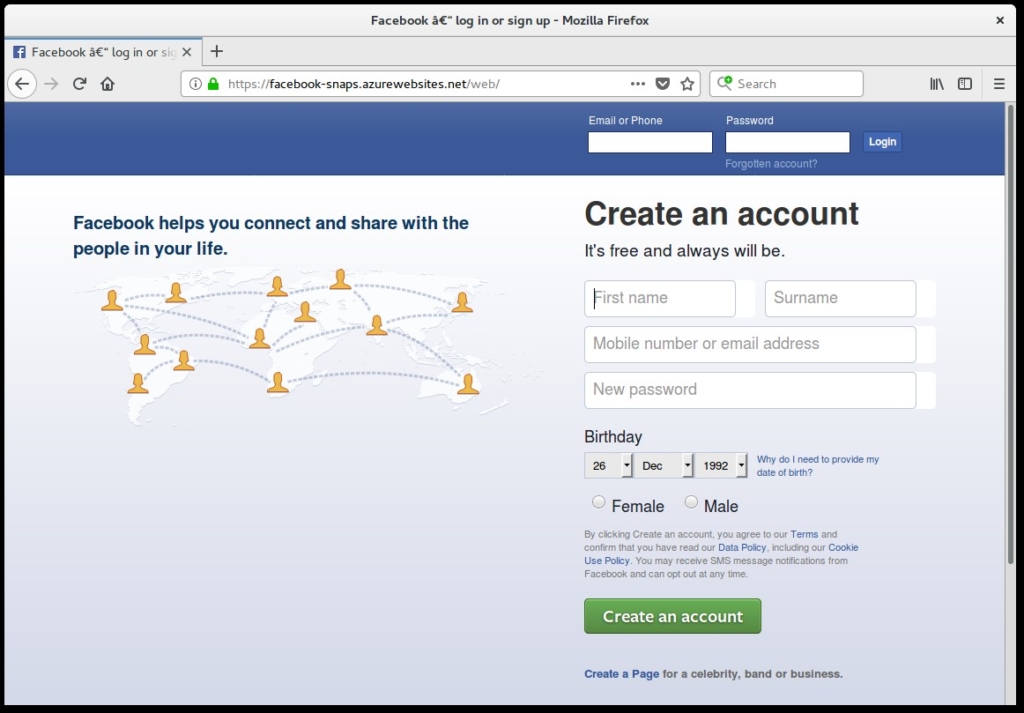
However, attackers too learn and adapt in how they target HRDs. This report documents two phishing campaigns that Amnesty International believes are being carried out by the same attacker (or attackers) likely originating from amongst the Gulf countries. These broad campaigns have targeted hundreds, if not a thousand, HRDs, journalists, political actors and others in many countries throughout the Middle East and North Africa region.
What makes these campaigns especially troubling is the lengths to which they go to subvert the digital security strategies of their targets. The first campaign, for example, utilizes especially well-crafted fake websites meant to imitate well-known “secure email” providers. Even more worryingly, the second demonstrates how attackers can easily defeat some forms of two-factor authentication to steal credentials, and obtain and maintain access to victims’ accounts. As a matter of fact, Amnesty Tech’s continuous monitoring and investigations into campaigns of targeted surveillance against HRDs suggest that many attacker groups are developing this capability.
Taken together, these campaigns are a reminder that phishing is a pressing threat and that more awareness and clarity over appropriate countermeasures needs to be available to human rights defenders.
Phishing Sites Imitating “Secure Email” Providers
Amnesty International has identified several well-crafted phishing sites for the popular email services Tutanota and ProtonMail. The providers are marketed as “secure email” solutions and have consequently gained some traction among activists.
These sites contain several elements that make them especially difficult for targets to identify as fakes. For instance, the attackers managed to obtain the domain tutanota.org and used it to almost completely replicate the original website for the Tutanota service, which is actually located at tutanota.com.
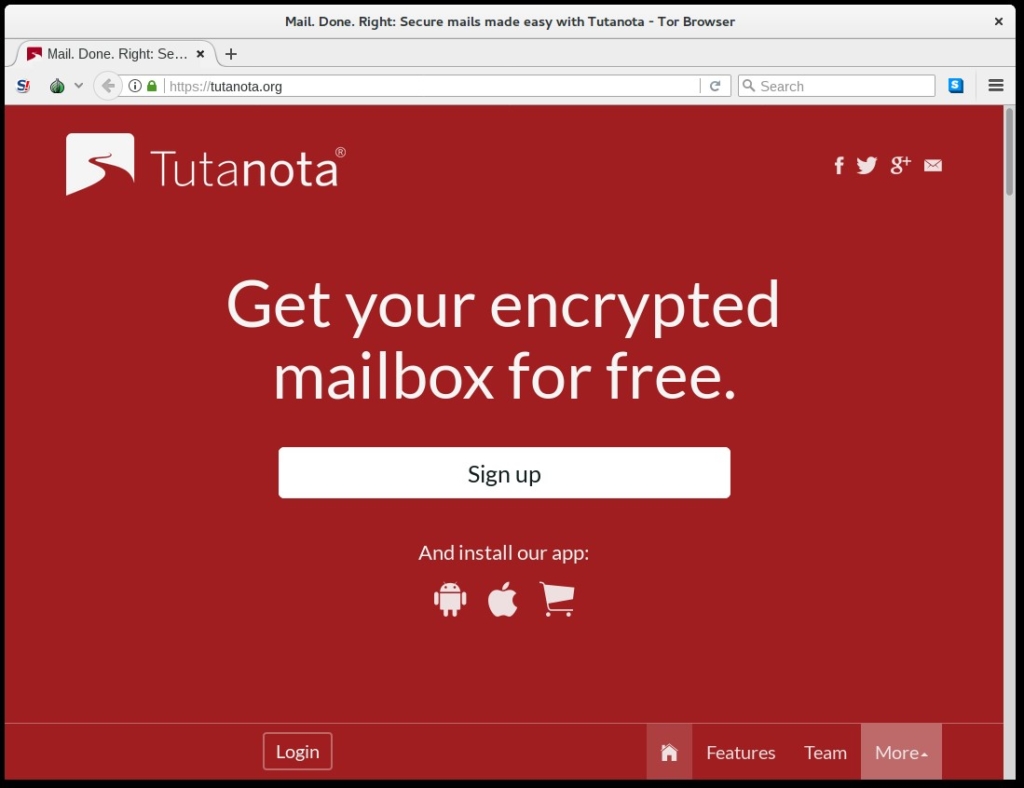
Many users rightfully expect that online services control the primary .com, .org and .net domain variants of their brand. If an attacker manages to acquire one of these variants they have a rare opportunity to make the fake website appear significantly more realistic. These fake sites also use transport encryption (represented by the https:// prefix, as opposed to the classic, unencrypted, https://). This enables the well-recognized padlock on the left side of the browser’s address bar, which users have over the years been often taught to look for when attempting to discern between legitimate and malicious sites. These elements, together with an almost indistinguishable clone of the original website, made this a very credible phishing site that would be difficult to identify even for the more tech-savvy targets.
If a victim were tricked into performing a login to this phishing site, their credentials would be stored and a valid login procedure would be then initiated with the original Tutanota site, giving the target no indication that anything suspicious had occurred.

Because of how remarkably deceptive this phishing site was, we contacted Tutanota’s staff, informed them about the ongoing phishing attack, and they quickly proceeded to request the shutdown of the malicious infrastructure.
These same attackers were also operating a ProtonMail phishing website (another popular email service marketed as secure) located at protonemail.ch, where the additional letter “e” is all that distinguishes this well-built replica from the original valid website protonmail.ch.
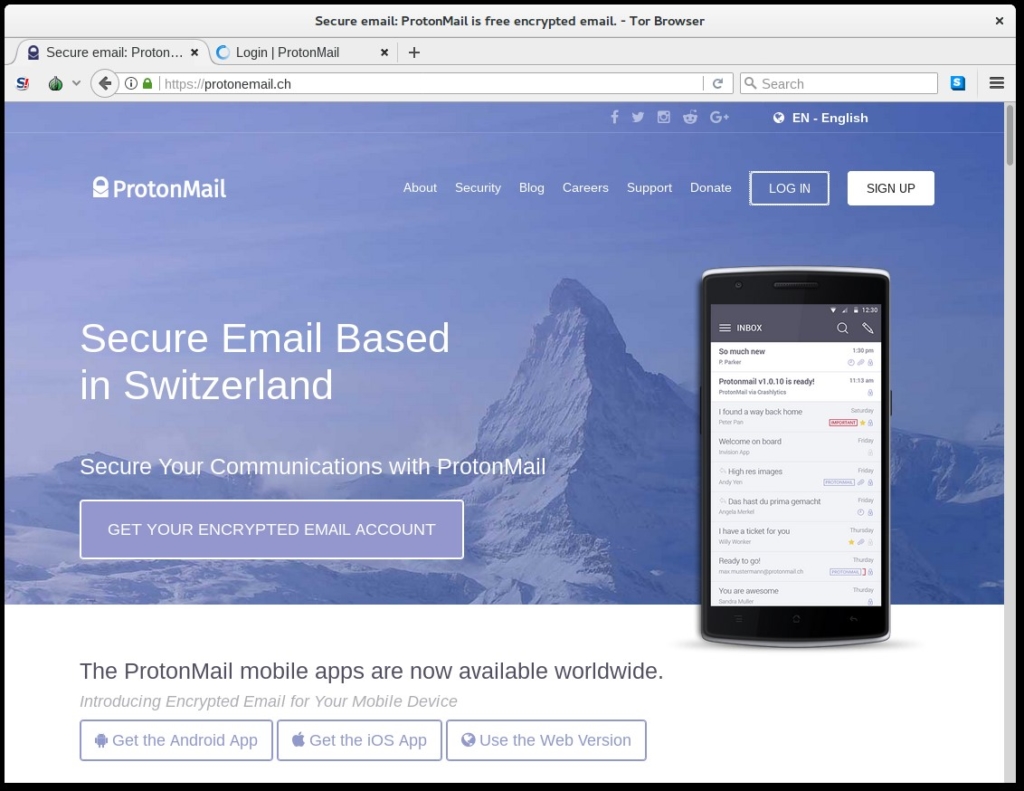
Clicking on the “LOG IN” button would direct the victims to the fake login prompt.
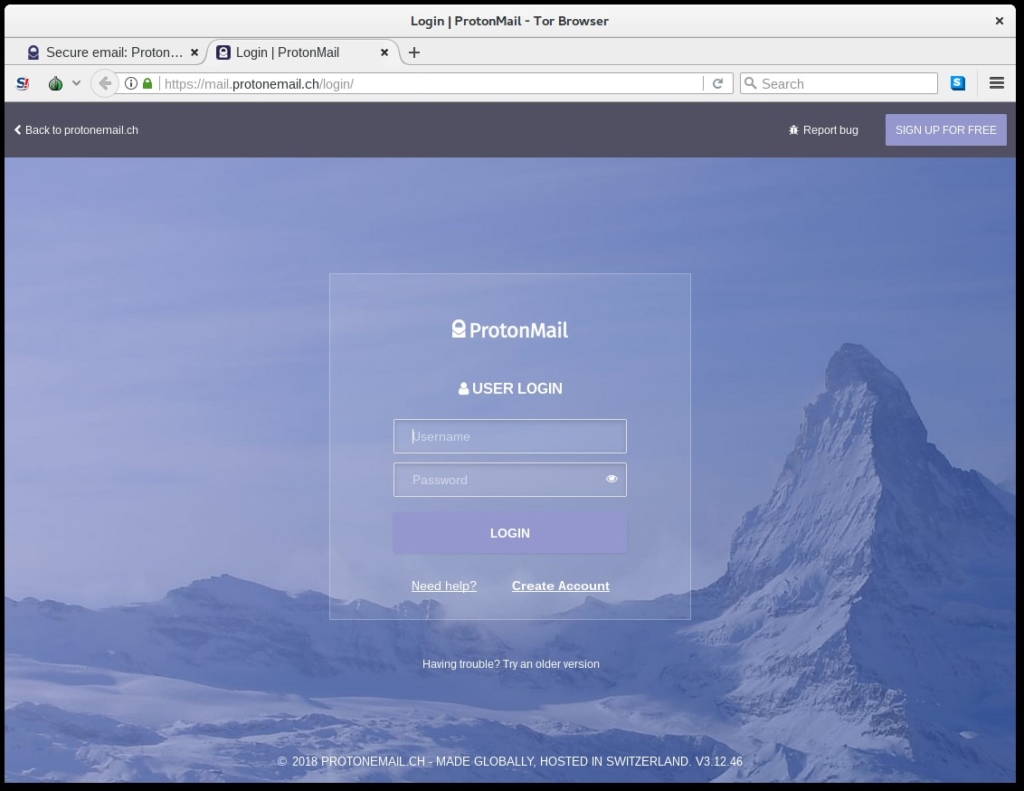
Of course, compiling and submitting the login form would result in the account’s credentials being stolen by the attackers.
Widespread Phishing of Google and Yahoo Users
Throughout 2017 and 2018, human rights defenders and journalists from the Middle East and North Africa region have been sharing with us suspicious emails they have been receiving. Investigating these emails, we identified a large and long-running campaign of targeted phishing attacks that has targeted hundreds, and likely over one thousand people overall. Most of the targets seemingly originating from the United Arab Emirates, Yemen, Egypt and Palestine.
It is worth noting that we found this campaign to be directly connected to some attacks included in section 2.4.2 of a technical report by UC Berkeley researcher Bill Marczak, in which he suggests various overlaps with other campaigns of targeted surveillance specifically targeting dissidents in the UAE.
Our investigation leads us to additionally conclude that this campaign likely originates with the same attacker – or attackers – who cloned the Tutanota and ProtonMail sites in the previous section. As in the previous campaign, this targeted phishing campaign employs very well-designed clones of the commercial sites it impersonates: Google and Yahoo. Unlike that campaign, however, this targeted phishing campaign is also designed to defeat the most common forms of two-factor authentication that targets might use to secure their accounts.
Lastly, we have identified and are currently investigating a series of malware attacks that appear to be tied to these phishing campaigns. This will be the subject of a forthcoming report.
Fake Security Alerts Work
In other campaigns, for example in our Operation Kingphish report, we have seen attackers create well developed online personas in order to gain the trust of their targets, and later use more crafty phishing emails that appeared to be invites to edit documents on Google Drive or participating in Google Hangout calls.
In this case, we have observed less sophisticated social engineering tricks. Most often this attacker made use of the common “security alert” scheme, which involves falsely alarming the targets with some fake notification of a potential account compromise. This approach exploits their fear and instills a sense of urgency in order to solicit a login with the pretense of immediately needing to change their password in order to secure their account. With HRDs having to be constantly on the alert for their personal and digital security, this social engineering scheme can be remarkably convincing.
The following is one example of a phishing email sent by this attacker.

Another phishing email sent with a similar variation of the same social engineering scheme.
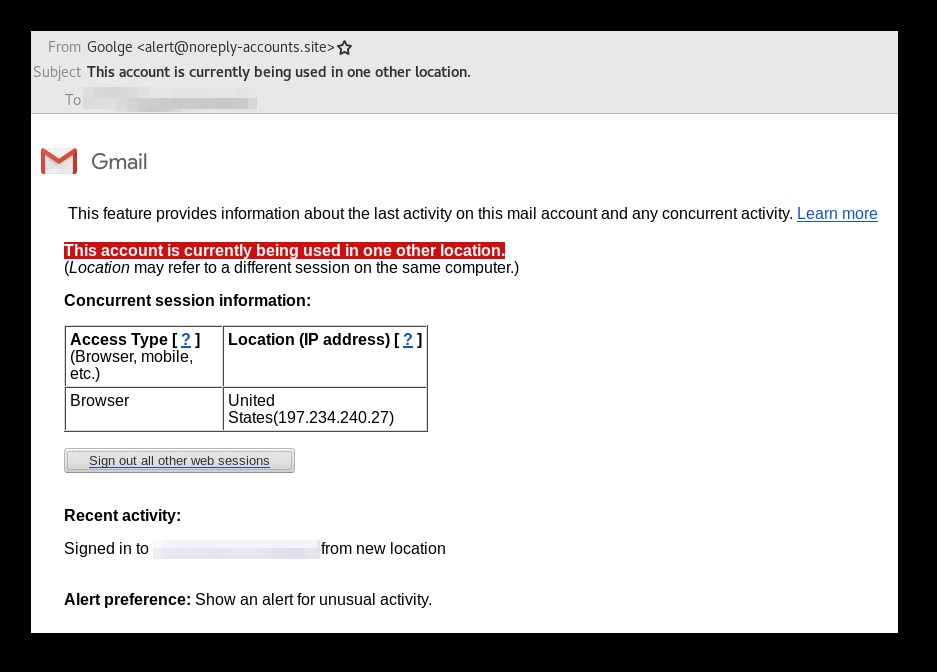
Clicking on the links and buttons contained in these malicious emails would take the victim to a well-crafted and convincing Google phishing website. These attackers often and regularly create new sites and rotate their infrastructure in order to avoid detection and reduce the damage of unexpected shutdowns by domain registrars and hosting providers. You can find at the bottom of this report a list of all the malicious domains we have identified.
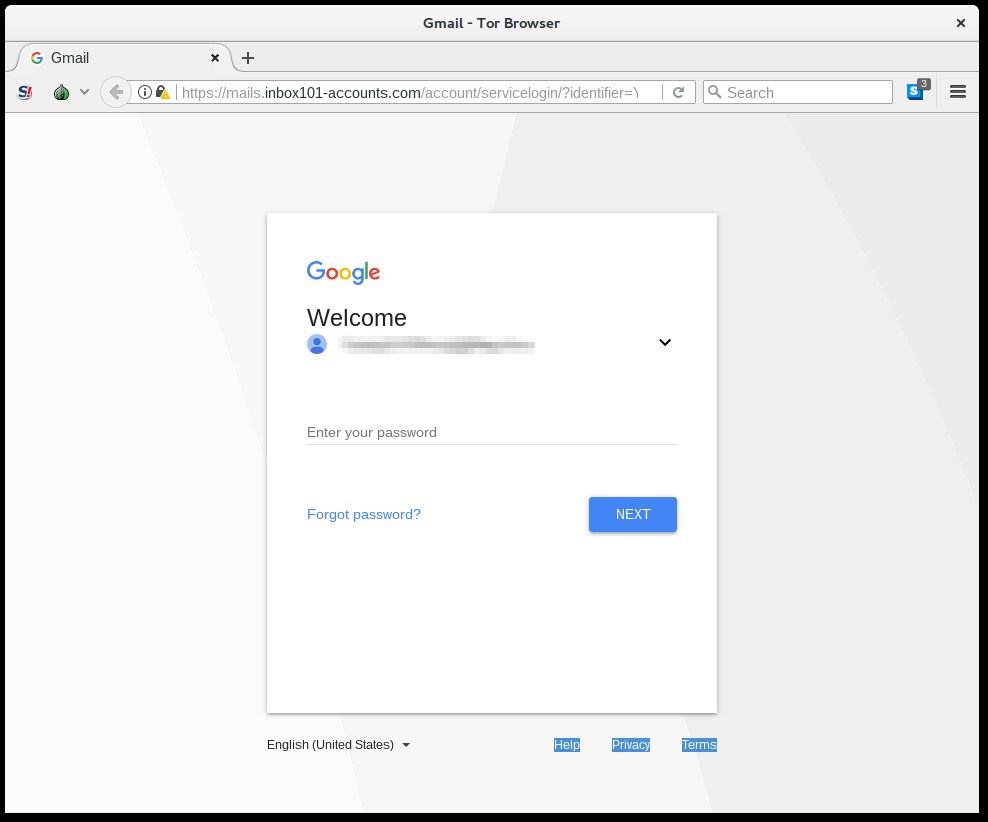
Although less common than attacks impersonating Google, we have also observed phishing attacks targeting Yahoo users.
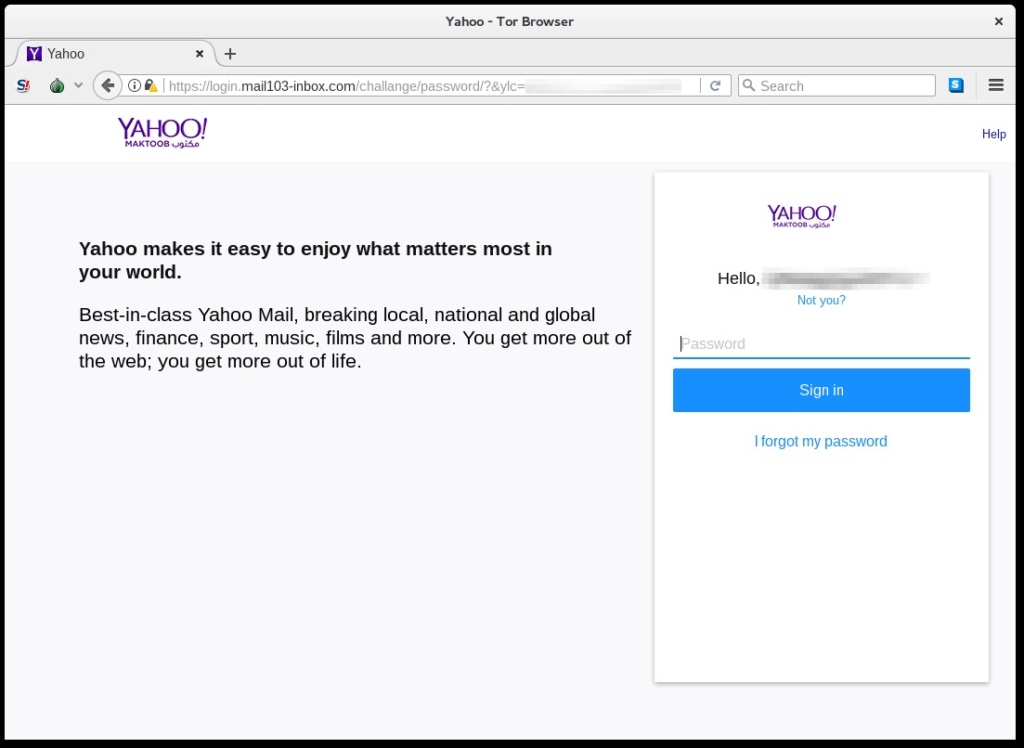
How Does the Phishing Attack Work?
In order to verify the functioning of the phishing pages we identified, we decided to create a disposable Google account. We selected one of the phishing emails that was shared with us, which pretended to be a security alert from Google, falsely alerting the victim of suspicious login activity, and soliciting them to change the password to their account.
The first step was to visit the phishing page.
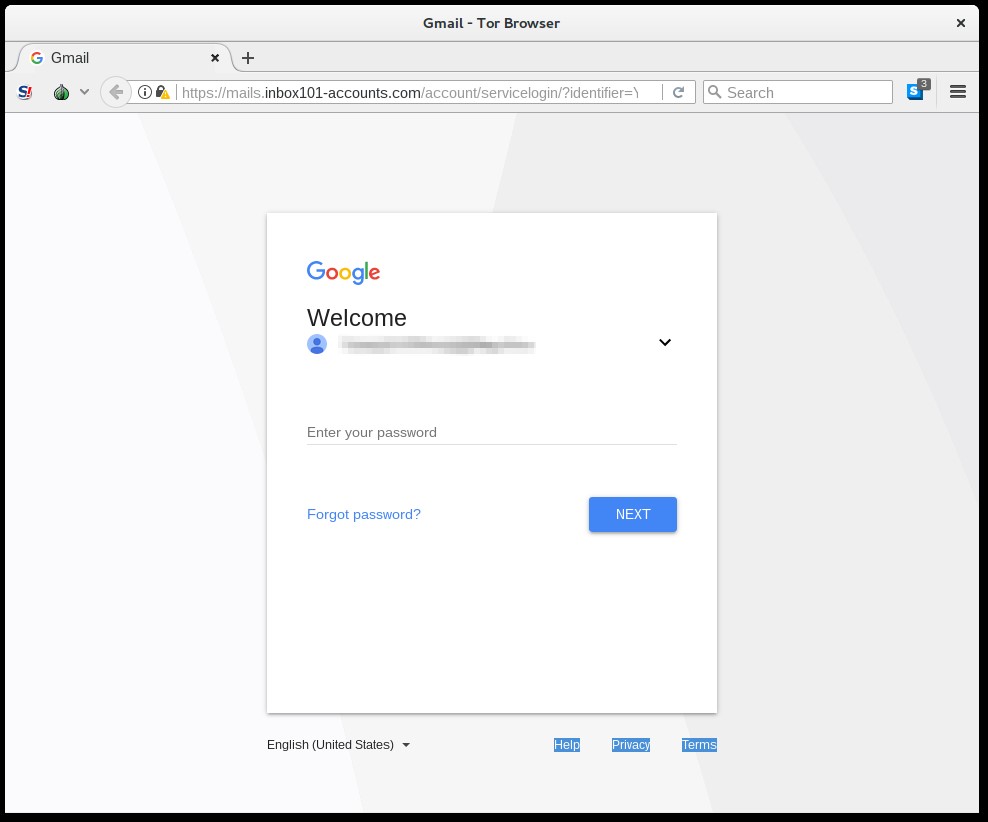
When we logged into the phishing page, we were redirected to another page where we were alerted that we had been sent a 2-Step Verification code (another term for two-factor authentication) via SMS to the phone number we used to register the account, consisting of six digits.
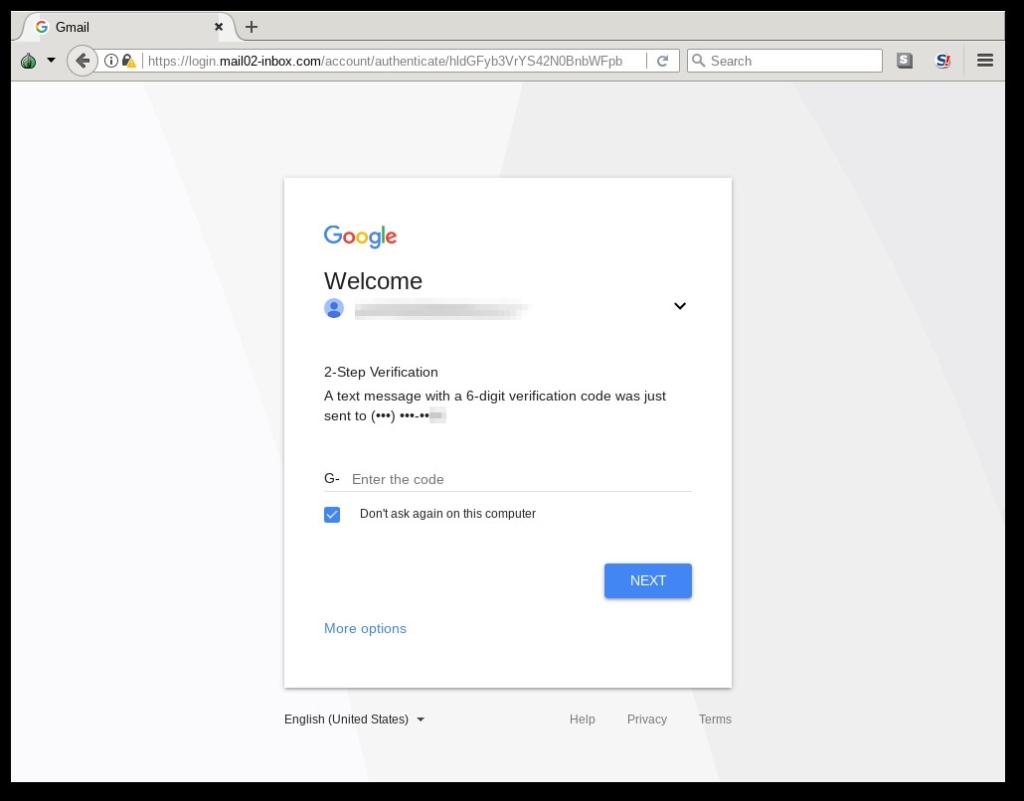
Sure enough, our configured phone number did receive an SMS message containing a valid Google verification code. After we entered our credentials and the 2-Step Verification code into the phishing page, we were then presented with a form asking us to reset the password for our account.
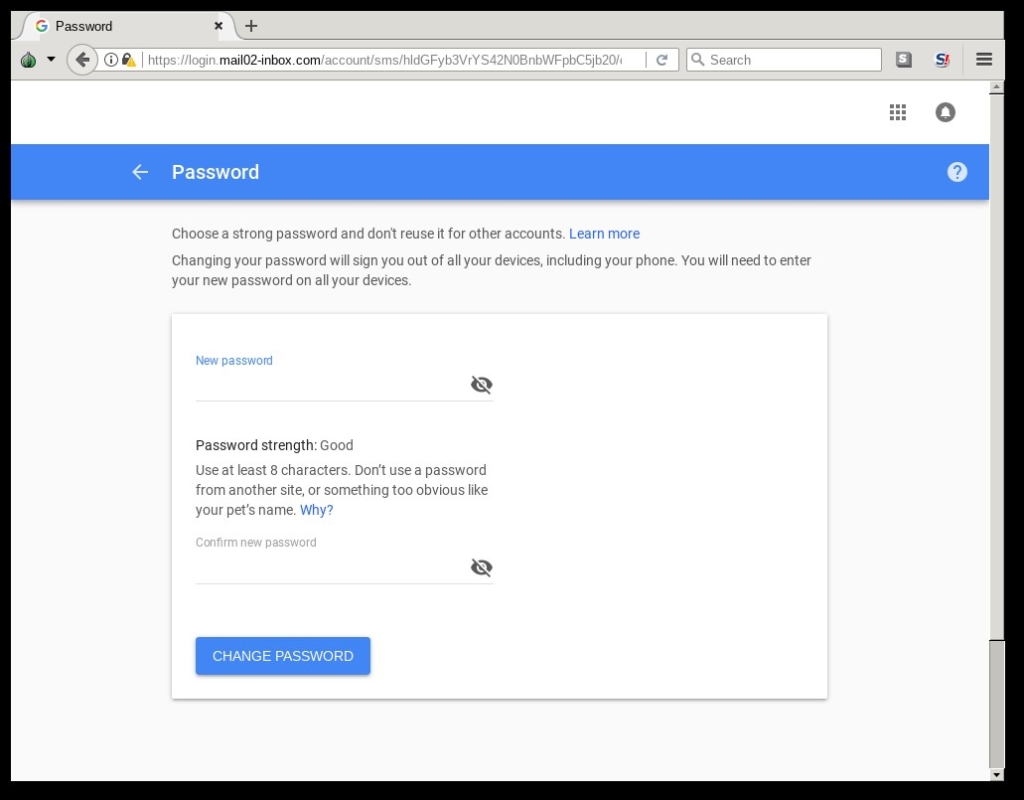
To most users a prompt from Google to change passwords would seem a legitimate reason to be contacted by the company, which in fact it is.
After checking the security events on our disposable Google account, we noticed that a password change was in fact issued by Windows computer operated by the attackers, seemingly connecting from an IP address that Google geolocates within the USA.
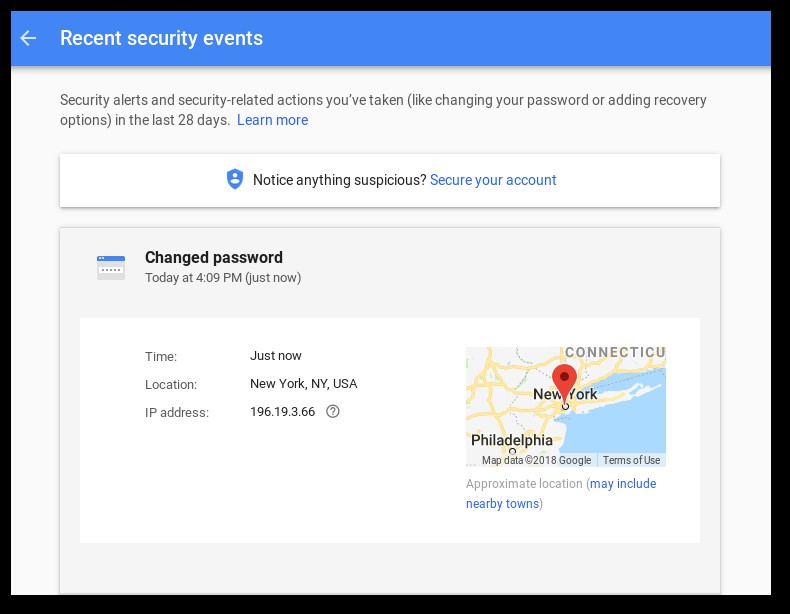
(The IP address used by the attackers to automatically authenticate and modify our Google account, 196.19.3.66, is actually an unauthenticated Squid HTTP proxy. The attackers can use open proxies to obscure the location of their phishing server.)
The purpose of taking this additional step is most likely just to fulfill the promise of the social engineering bait and therefore to not raise any suspicion on the part of the victim.
After following this one last step, we were then redirected to an actual Google page. In a completely automated fashion, the attackers managed to use our password to login into our account, obtain from us the two-factor authentication code sent to our phone, and eventually prompt us to change the password to our account. The phishing attack is now successfully completed.
Similarly, we created a new Yahoo account and configured two-factor authentication using the available phone verification as visible in the account settings:

After entering our newly created email address and password in the Yahoo phishing page operated by the attackers we are first requested to verify the phone number associated with our account.
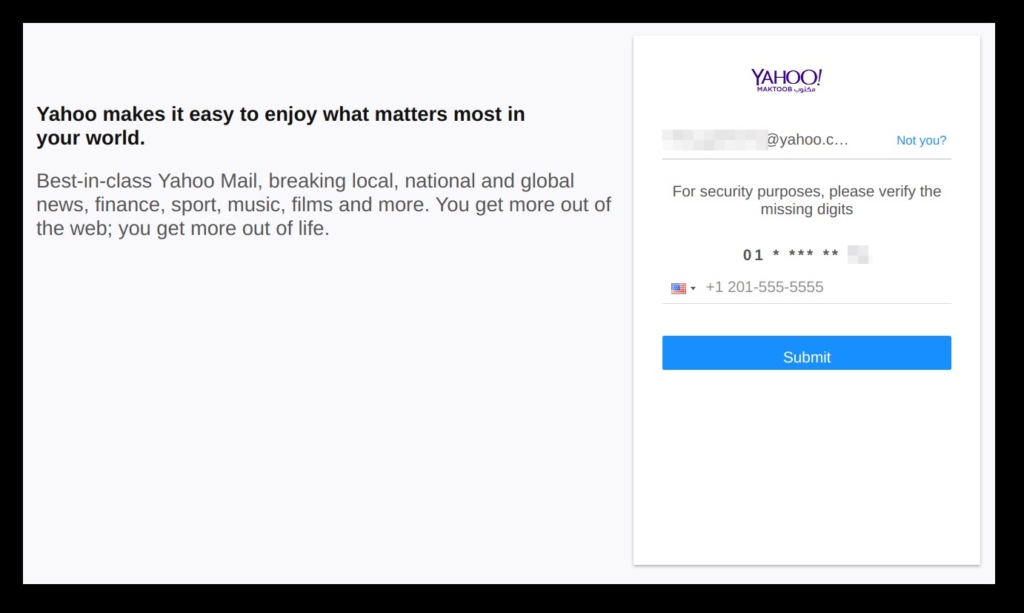
Then we are requested to enter the verification code that would be sent to our phone.
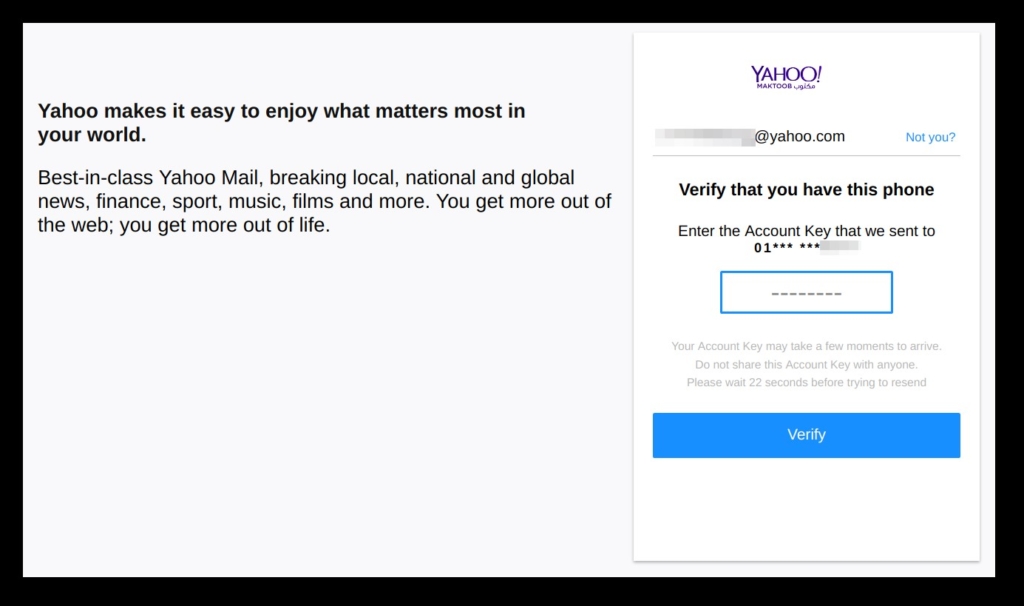
Indeed, we received a valid verification code from Yahoo.
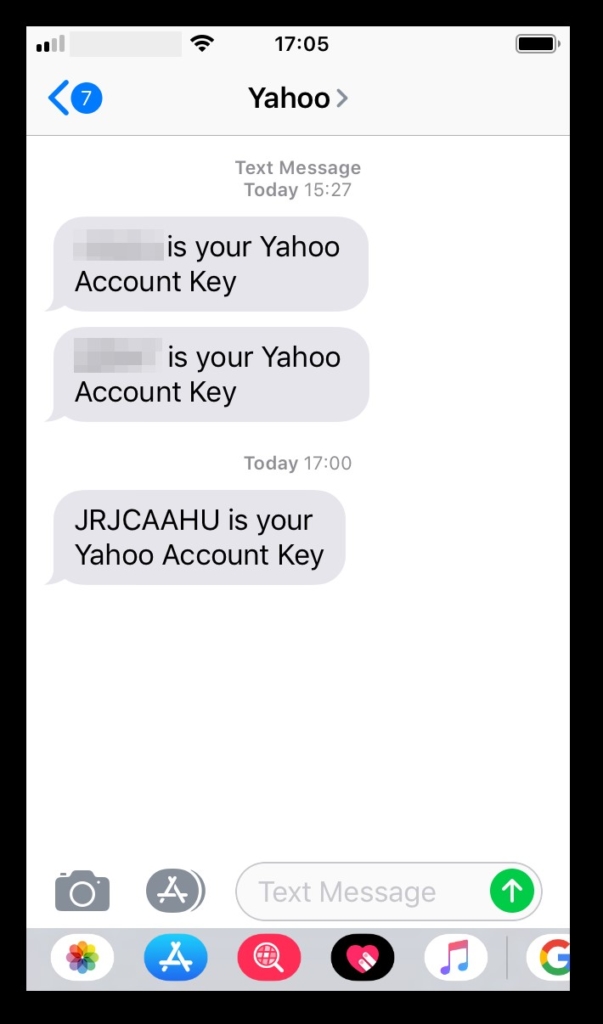
Challenges in Securing Online Accounts
Finding a secure way to authenticate users is a very difficult technical issue, although some progress has been made over the years that has raised the bar of difficulty for attackers attempting to compromise accounts at scale.
Two-factor authentication has become a de-facto standard that is almost always recommended as a required step for securing online accounts. With two-factor authentication procedures enabled, users are required to provide a secondary form of verification that normally comes in the form of a numerical token that is either sent via SMS or through a dedicated app to be installed on their phone. These tokens are short-lived, and normally expire after 30 seconds. In other cases, like that of Yahoo, the user is required instead to manually allow an ongoing authentication attempt by tapping a button on their phone.
Why is this useful? Requiring a secondary form of authentication prevents some scenarios in which an attacker might have obtained access to your credentials. While this can most commonly happen with some unsophisticated phishing attempts, it is also a useful mitigation to password reuse. You should definitely configure your online accounts to use different passwords (and ideally use a password manager), but in the case you reuse – accidentally or otherwise – a password which was stolen (for example through the numerous data breaches occurring all the time) having two-factor authentication enabled will most likely mitigate against casual attackers trying to reuse the same password on as many other online accounts as possible.
Generally, there are three forms of two-factor authentication that online services provide:
- Software token: this is the most common form, and consists in asking the user to enter in the login form a token (usually composed of six digits, sometimes it includes letters) that is sent to them either via SMS or through a dedicated app the user configured at the time of registration.
- Software push notification: the user receives a notification on the phone through an app that was installed at the time of registration. This app alerts the user that a login attempt is being made and the user can approve it or block it.
- Hardware security keys: this is a more recent form of two-factor authentication that requires the user to physically insert a special USB key into the computer in order to log into the given website.
While two-factor push notifications often provide some additional information that might be useful to raise your suspicion (for example, the country of origin of the client attempting to authenticate being different from yours), most software-based methods fall short when the attacker is sophisticated enough to employ some level of automation.
As we saw with the campaigns described in this report, if a victim is tricked into providing the username and password to their account, nothing will stop the attacker from asking to provide the 6-digits two-factor token, eventually the phone number to be verified, as well as any other required information. With sufficient instrumentation and automation, the attackers can make use of the valid two-factor authentication tokens and session before they expire, successfully log in and access all the emails and contacts of the victim. In other words, when it comes to targeted phishing software-based two-factor authentication, without appropriate mitigation, could be a speed bump at best.
Don’t be mistaken, two-factor authentication is important and you should make sure you enable it everywhere you can. However, without a proper understanding of how real attackers work around these countermeasures, it is possible that people are misled into believing that, once it is enabled, they are safe to log into just about anything and feel protected. Individuals at risk, human rights defenders above all, are very often targets of phishing attacks and it is important that they are equipped with the right knowledge to make sure they aren’t improperly lowering their level of caution online.
While it is possible that in the future capable attackers could develop ways around that too, at the moment the safest two-factor authentication option available is the use of security keys.

This technology is supported for example by Google’s Advanced Protection program, by Facebook and as of recently by Twitter as well. This process might appear painful at first, but it significantly raises the difficulty for any attacker to be successful, and it isn’t quite as burdensome as one might think. Normally, you will be required to use a security key only when you are authenticating for the first time from a new device.
That said, security keys have downsides as well. Firstly, they are still at a very early stage of adoption: only few services support them and most email clients (such as Thunderbird) are still in the process of developing an integration. Secondly, you can of course lose your security key and be locked out of your accounts. However, you could just in the same way lose the phone you use for other forms of two-factor authentication, and in both cases, you should carefully configure an option for recovery (through printed codes or a secondary key) as instructed by the particular service.
As with every technology, it is important individuals at risk are conscious of the opportunities as well as the shortcomings some of these security procedures offer, and determine (perhaps with the assistance of an expert) which configuration is best suited for their respective requirements and levels of risk.
How the Bypass for Two-Factor Authentication Works
The servers hosting the Google and Yahoo phishing sites also mistakenly exposed a number of publicly listed directories that allowed us to discover some details on the attacker’s plan. One folder located at /setup/ contained a database SQL schema likely used by the attackers to store the credentials obtained through the phishing frontend:
|
— — Database: `phishing` — — ——————————————————– — — Table structure for table `attempts` — CREATE TABLE `attempts` ( `id` int(11) AUTO_INCREMENT primary key NOT NULL, `attempts` text, `status` varchar(255) DEFAULT NULL, `timestamp` timestamp NOT NULL DEFAULT CURRENT_TIMESTAMP, `sid` varchar(255) DEFAULT NULL, `information` text, `seen` tinyint(1) DEFAULT NULL ) ENGINE=InnoDB DEFAULT CHARSET=latin1; — — Table structure for table `creds` — CREATE TABLE `creds` ( `id` int(11) AUTO_INCREMENT primary key NOT NULL, `credentials` text, `status` varchar(255) DEFAULT NULL, `timestamp` timestamp NOT NULL DEFAULT CURRENT_TIMESTAMP, `sid` varchar(255) DEFAULT NULL, `information` text, `seen` tinyint(1) DEFAULT NULL ) ENGINE=InnoDB DEFAULT CHARSET=latin1; |
A folder located at /bin/ contained an installation of Selenium with Chrome Driver, which is a set of tools commonly used for the automation of testing of web applications. Selenium allows to script the configuration and launch of a browser (in this case Google Chrome) and make it automatically visit any website and perform certain activity (such as clicking on a button) in the page.
While the original purpose was to simplify the process of quality assurance for web developers, it also lends itself perfectly to the purpose of automating login attempts into legitimate websites and streamlining phishing attacks. Particularly, this allows attackers to easily defeat software-based two-factor authentication.
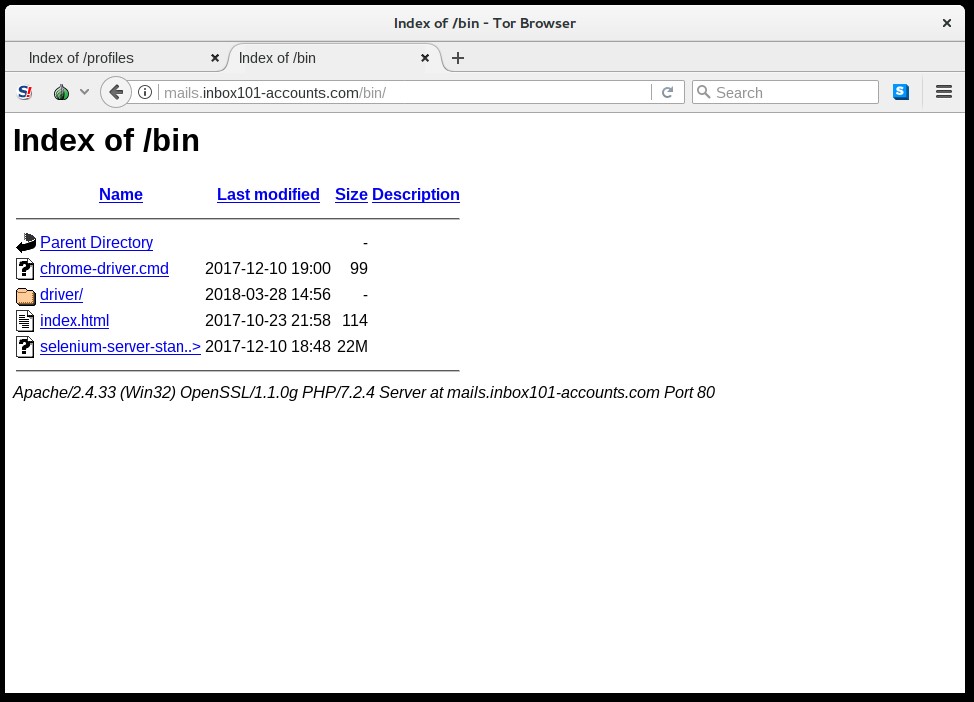
Yet another folder called /profiles/ instead contained hundreds of folders generated by each spawned instance of Google Chrome, automated through Selenium as explained.
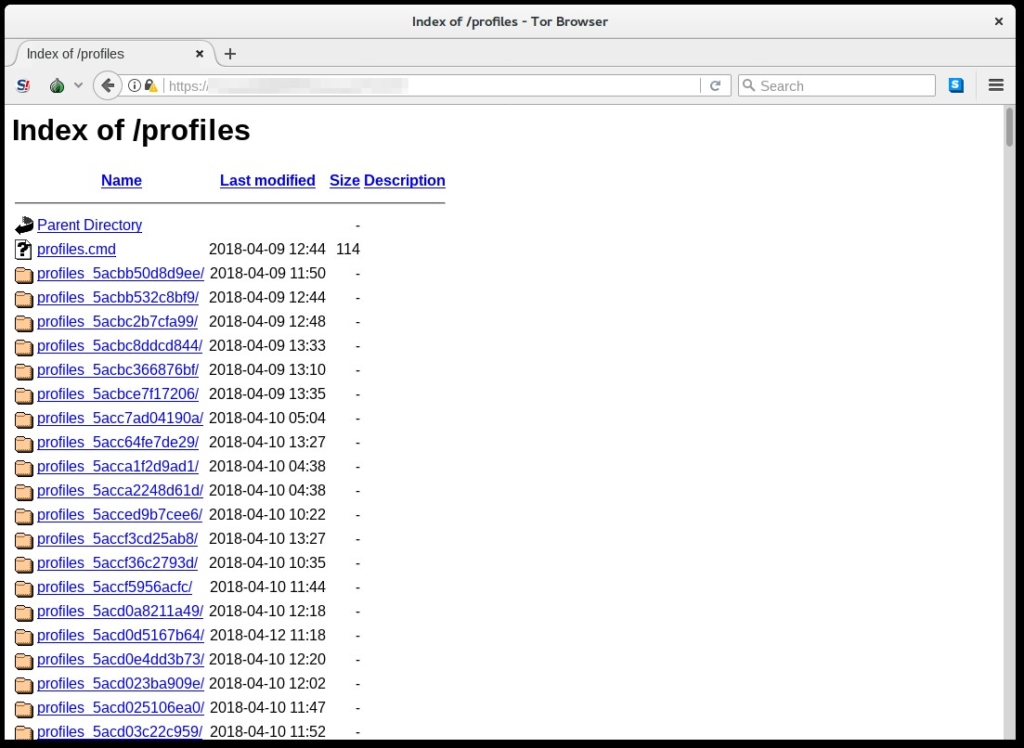
Because all the profile folders generated by the spawned Google Chrome instances operated by the attackers are exposed to the public, we can actually get a glimpse at how the accounts are compromised by inspecting the History database that is normally used by the browser to store the browsing history.
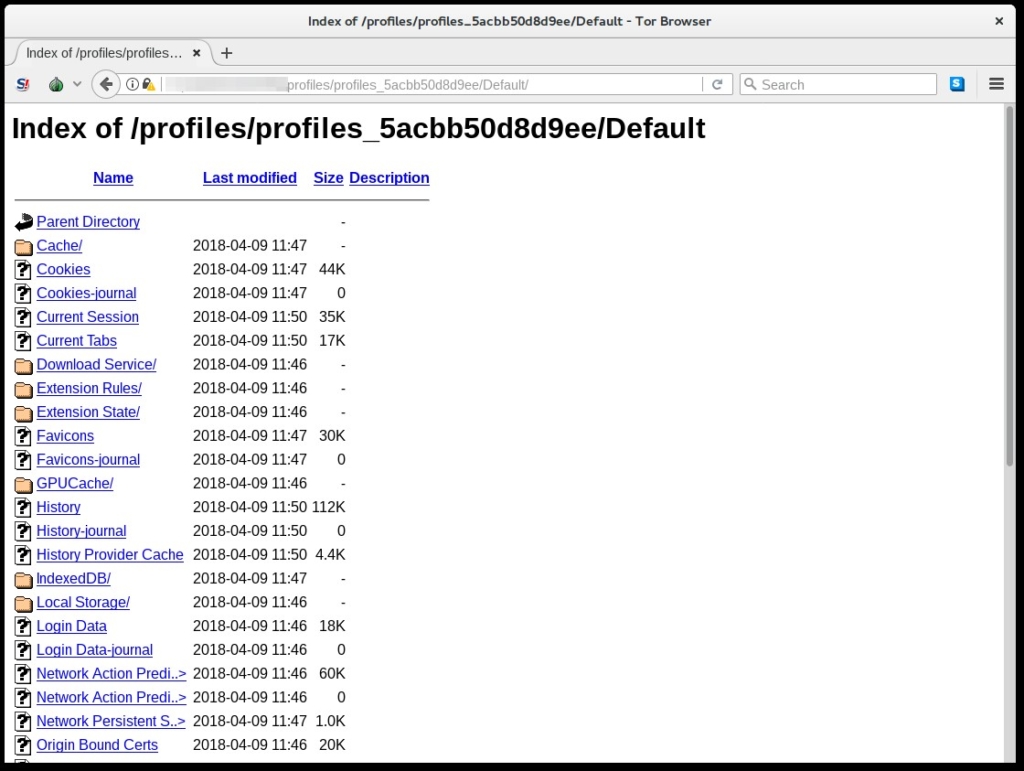
Through the many Chrome folders we could access, we identified two clear patterns of compromise.
The first pattern of compromise, and most commonly found across the data we have obtained, is exemplified by the following chronological list of URLs visited by the Chrome browser instrumented by the attackers:
- https://mail.yahoo.com/
- https://guce.yahoo.com/consent?brandType=nonEu&gcrumb=[REDACTED]&done=https%3A%2F%2Fmail.yahoo.com%2F
- https://login.yahoo.com/?done=https%3A%2F%2Fmail.yahoo.com%2F
- https://login.yahoo.com/account/challenge/push?done=https%3A%2F%2Fmail.yahoo.com%2F&authMechanism=primary&display=login&yid=[REDACTED]&sessionIndex=QQ–&acrumb=[REDACTED]
- https://login.yahoo.com/account/challenge/phone-obfuscation?done=https%3A%2F%2Fmail.yahoo.com%2F&authMechanism=primary&display=login&yid=[REDACTED]&acrumb=[REDACTED]&sessionIndex=QQ–&eid=3640
- https://login.yahoo.com/account/challenge/phone-verify?done=https%3A%2F%2Fmail.yahoo.com%2F&authMechanism=primary&display=login&yid=[REDACTED]&acrumb=[REDACTED]&sessionIndex=QQ–
- https://login.yahoo.com/account/challenge/pre-change-password?done=https%3A%2F%2Fguce.yahoo.com%2Fconsent%3Fgcrumb%3D[REDACTED]%26trapType%3Dlogin%26done%3Dhttps%253A%252F%252Fmail.yahoo.com%252F%26intl%3D%26lang%3D&authMechanism=prima$
- https://login.yahoo.com/account/security/app-passwords/list
- https://login.yahoo.com/?done=https%3A%2F%2Flogin.yahoo.com%2Faccount%2Fsecurity%2Fapp-passwords%2Flist%3F.scrumb%3D0
- https://login.yahoo.com/account/security/app-passwords/list?.scrumb=[REDACTED]
- https://login.yahoo.com/account/security/app-passwords/add?scrumb=[REDACTED]
As we can see, the attackers are automatically visiting the legitimate Yahoo login page, entering the credentials, and then following all of the required steps for eventual two-factor authentication that might have been configured by the victim. Once the full authentication process is completed, the attackers proceed to create what is commonly known as an “App Password”, which is a separate password that some services, including Yahoo, offer in order to allow third-party apps that don’t support two-factor verification to access the user’s account (for example, if the user wants to use Outlook to access the email). Because of this, App Passwords are perfect for an attacker to maintain persistent access to the victim’s account, as they will not be further required to perform any additional two-factor authentication when accessing it.
In the second pattern of compromise we identified, the attackers again seem to automate the process of authenticating into the victim’s account, but they appear to additionally attempt to perform an “account migration” in order to fundamentally clone the emails and the contacts list of from the victim’s account to a separate account under the attacker’s control:
- https://mail.yahoo.com/
- https://guce.yahoo.com/consent?brandType=nonEu&gcrumb=[REDACTED]&done=https%3A%2F%2Fmail.yahoo.com%2F
- https://login.yahoo.com/?done=https%3A%2F%2Fmail.yahoo.com%2F
- https://login.yahoo.com/account/challenge/password?done=https%3A%2F%2Fmail.yahoo.com%2F&authMechanism=primary&display=narrow&yid=[REDACTED]&sessionIndex=QQ–&acrumb=[REDACTED]
- https://login.yahoo.com/account/challenge/phone-obfuscation?done=https%3A%2F%2Fmail.yahoo.com%2F&authMechanism=primary&display=narrow&yid=[REDACTED]&acrumb=[REDACTED]&sessionIndex=QQ–&eid=3650
- https://login.yahoo.com/account/challenge/phone-verify?done=https%3A%2F%2Fmail.yahoo.com%2F&authMechanism=primary&display=narrow&yid=[REDACTED]&acrumb=[REDACTED]&sessionIndex=QQ–
- https://login.yahoo.com/account/yak-opt-in/upsell?done=https%3A%2F%2Fguce.yahoo.com%2Fconsent%3Fgcrumb%3D[REDACTED]%26trapType%3Dlogin%26done%3Dhttps%253A%252F%252Fmail.yahoo.com%252F%26intl%3D%26lang%3D&authMechanism=primary&display=n$
- https://guce.yahoo.com/consent?brandType=nonEu&gcrumb=[REDACTED]&done=https%3A%2F%2Fmail.yahoo.com%2F
- https://mail.yahoo.com/m/
- https://mg.mail.yahoo.com/neo/m/launch?
- https://mg.mail.yahoo.com/m/
- https://mg.mail.yahoo.com/m/folders/1
- https://www.gmail.com/
- https://www.gmail.com/
- https://www.google.com/gmail/
- https://mail.google.com/mail/
- https://accounts.google.com/ServiceLogin?service=mail&passive=true&rm=false&continue=https://mail.google.com/mail/&ss=1&scc=1<mpl=default<mplcache=2&emr=1&osid=1#
- https://mail.google.com/intl/en/mail/help/about.html#
- https://www.google.com/intl/en/mail/help/about.html#
- https://www.google.com/gmail/about/#
- https://accounts.google.com/AccountChooser?service=mail&continue=https://mail.google.com/mail/
- https://accounts.google.com/ServiceLogin?continue=https%3A%2F%2Fmail.google.com%2Fmail%2F&service=mail&sacu=1&rip=1
- https://accounts.google.com/signin/v2/identifier?continue=https%3A%2F%2Fmail.google.com%2Fmail%2F&service=mail&sacu=1&rip=1&flowName=GlifWebSignIn&flowEntry=ServiceLogin
- https://accounts.google.com/signin/v2/sl/pwd?continue=https%3A%2F%2Fmail.google.com%2Fmail%2F&service=mail&sacu=1&rip=1&flowName=GlifWebSignIn&flowEntry=ServiceLogin&cid=1&navigationDirection=forward
- https://accounts.google.com/CheckCookie?hl=en&checkedDomains=youtube&checkConnection=youtube%3A375%3A1&pstMsg=1&chtml=LoginDoneHtml&service=mail&continue=https%3A%2F%2Fmail.google.com%2Fmail%2F&gidl=[REDACTED]
- https://mail.google.com/accounts/SetOSID?authuser=0&continue=https%3A%2F%2Fmail.google.com%2Fmail%2F%3Fauth%3D[REDACTED]
- https://mail.google.com/mail/?auth=[REDACTED].
- https://mail.google.com/mail/u/0/
- https://mail.google.com/mail/u/0/#inbox
- https://mail.google.com/mail/u/0/#settings/general
- https://mail.google.com/mail/u/0/#settings/accounts
- https://mail.google.com/mail/u/0/?ui=2&ik=[REDACTED]&jsver=OeNArYUPo4g.en.&view=mip&fs=1&tf=1&ver=OeNArYUPo4g.en.&am=[REDACTED]
- https://api.shuttlecloud.com/gmailv2/authenticate/oauth/[REDACTED]%40yahoo.com?ik=[REDACTED]&email=[REDACTED]@yahoo.com&user=0&scopes=contactsmigration,emailmigration
- https://api.login.yahoo.com/oauth2/request_auth?client_id=[REDACTED]&redirect_uri=https%3A//api.shuttlecloud.com/gmailv2/authenticate/oauth/c$
- https://api.login.yahoo.com/oauth2/authorize
- https://api.shuttlecloud.com/gmailv2/authenticate/oauth/callback?email=[REDACTED]&code=[REDACTED]
- https://mail.google.com/mail/u/0/?token_id=[REDACTED]&ik=[REDACTED]&ui=2&email=[REDACTED]%40yahoo.com&view=mas
In this rather longer chronology of URLs visited by the Chrome browser instrumented by the attackers we can see that they designed the system to attempt a login into Yahoo with the stolen credentials and request the completion of a two-factor verification process, as requested by the service. Once the authentication is completed, the phishing backend will automatically connect the compromised Yahoo account to a legitimate account migration service called ShuttleCloud, which allows the attackers to automatically and immediately generate a full clone of the victim’s Yahoo account under a separate Gmail account under their control.
After such malicious account migration happened, the attackers would then be able to comfortably search and read through all the emails stolen from the victims leveraging the full-fledged functionality offered by Gmail.
Indicators
tutanota[.]org
protonemail[.]ch
accounts-mysecure[.]com
accounts-mysecures[.]com
accounts-secuirty[.]com
accounts-securtiy[.]com
accounts-servicse[.]com
accounts-settings[.]com
account-facebook[.]com
account-mysecure[.]com
account-privacy[.]com
account-privcay[.]com
account-servics[.]com
account-servicse[.]com
alert-newmail02[.]pro
applications-secure[.]com
applications-security[.]com
application-secure[.]com
authorize-myaccount[.]com
blu142-live[.]com
blu160-live[.]com
blu162-live[.]com
blu165-live[.]com
blu167-live[.]com
blu175-live[.]com
blu176-live[.]com
blu178-live[.]com
blu179-live[.]com
blu187-live[.]com
browsering-check[.]com
browsering-checked[.]com
browsers-checked[.]com
browsers-secure[.]com
browsers-secures[.]com
browser-checked[.]com
browser-secures[.]com
bul174-live[.]com
checking-browser[.]com
check-activities[.]com
check-browser[.]com
check-browsering[.]com
check-browsers[.]com
connected-myaccount[.]com
connect-myaccount[.]com
data-center17[.]website
documents-view[.]com
documents-viewer[.]com
document-viewer[.]com
go2myprofile[.]info
go2profiles[.]info
googledriveservice[.]com
gotolinks[.]top
goto-newmail01[.]pro
idmsa-login[.]com
inbox01-email[.]pro
inbox01-gomail[.]com
inbox01-mails[.]icu
inbox01-mails[.]pro
inbox02-accounts[.]pro
inbox02-mails[.]icu
inbox02-mails[.]pro
inbox03-accounts[.]pro
inbox03-mails[.]icu
inbox03-mails[.]pro
inbox04-accounts[.]pro
inbox04-mails[.]icu
inbox04-mails[.]pro
inbox05-accounts[.]pro
inbox05-mails[.]icu
inbox05-mails[.]pro
inbox06-accounts[.]pro
inbox06-mails[.]pro
inbox07-accounts[.]pro
inbox101-account[.]com
inbox101-accounts[.]com
inbox101-accounts[.]info
inbox101-accounts[.]pro
inbox101-live[.]com
inbox102-account[.]com
inbox102-live[.]com
inbox102-mail[.]pro
inbox103-account[.]com
Inbox103-mail[.]pro
inbox104-accounts[.]pro
inbox105-accounts[.]pro
inbox106-accounts[.]pro
Inbox107-accounts[.]pro
inbox108-accounts[.]pro
inbox109-accounts[.]pro
inbox169-live[.]com
inbox171-live[.]com
inbox171-live[.]pro
inbox172-live[.]com
inbox173-live[.]com
inbox174-live[.]com
inbox-live[.]com
inbox-mail01[.]pro
inbox-mail02[.]pro
inbox-myaccount[.]com
mail01-inbox[.]pro
mail02-inbox[.]com
mail02-inbox[.]pro
mail03-inbox[.]com
mail03-inbox[.]pro
mail04-inbox[.]com
mail04-inbox[.]pro
mail05-inbox[.]pro
mail06-inbox[.]pro
mail07-inbox[.]pro
mail08-inbox[.]pro
mail09-inbox[.]pro
mail10-inbox[.]pro
mail12-inbox[.]pro
mail13-inbox[.]pro
mail14-inbox[.]pro
mail15-inbox[.]pro
mail16-inbox[.]pro
mail17-inbox[.]pro
mail18-inbox[.]pro
mail19-inbox[.]pro
mail20-inbox[.]pro
mail21-inbox[.]pro
mail101-inbox[.]com
mail101-inbox[.]pro
mail103-inbox[.]com
mail103-inbox[.]pro
mail104-inbox[.]com
mail104-inbox[.]pro
mail105-inbox[.]com
mail105-inbox[.]pro
mail106-inbox[.]pro
mail107-inbox[.]pro
mail108-inbox[.]pro
mail109-inbox[.]pro
mail110-inbox[.]pro
mail201-inbox[.]pro
mail-inbox[.]pro
mailings-noreply[.]pro
myaccountes-setting[.]com
myaccountes-settings[.]com
myaccountsetup[.]live
myaccounts-login[.]com
myaccounts-profile[.]com
myaccounts-secuirty[.]com
myaccounts-secures[.]com
myaccounts-settings[.]com
myaccounts-settinq[.]com
myaccounts-settinqes[.]com
myaccounts-transfer[.]com
myaccount-inbox[.]pro
myaccount-logins[.]com
myaccount-redirects[.]com
myaccount-setting[.]com
myaccount-settinges[.]com
myaccount-settings[.]ml
myaccount-setup[.]com
myaccount-setup1[.]com
myaccount-setups[.]com
myaccount-transfer[.]com
myaccount[.]verification-approve[.]com
myaccount[.]verification-approves[.]com
myaccuont-settings[.]com
mysecures-accounts[.]com
mysecure-account[.]com
mysecure-accounts[.]com
newinbox-accounts[.]pro
newinbox01-accounts[.]pro
newinbox01-mails[.]pro
newinbox02-accounts[.]pro
newinbox03-accounts[.]pro
newinbox05-accounts[.]pro
newinbox06-accounts[.]pro
newinbox07-accounts[.]pro
newinbox08-accounts[.]pro
newinbox-account[.]info
newinbox-accounts[.]pro
noreply[.]ac
noreply-accounts[.]site
noreply-mailer[.]pro
noreply-mailers[.]com
noreply-mailers[.]pro
noreply-myaccount[.]com
privacy-myaccount[.]com
privcay-setting[.]com
profile-settings[.]com
recovery-settings[.]info
redirections-login[.]com
redirections-login[.]info
redirection-login[.]com
redirection-logins[.]com
redirects-myaccount[.]com
royalk-uae[.]com
securesmails-alerts[.]pro
secures-applications[.]com
secures-browser[.]com
secures-inbox[.]com
secures-inbox[.]info
secures-settinqes[.]com
secures-transfer[.]com
secures-transfers[.]com
secure-browsre[.]com
secure-settinqes[.]com
security-settinges[.]com
securtiy-settings[.]com
services-securtiy[.]com
settings-secuity[.]com
setting-privcay[.]com
settinqs-myaccount[.]com
settinq-myaccounts[.]com
thx-me[.]website
transfer-click[.]com
transfer-clicks[.]com
truecaller[.]services
urllink[.]xyz
verifications-approve[.]com
verification-approve[.]com
verification-approves[.]com
xn--mxamya0a[.]ccn
yahoo[.]llc
…


